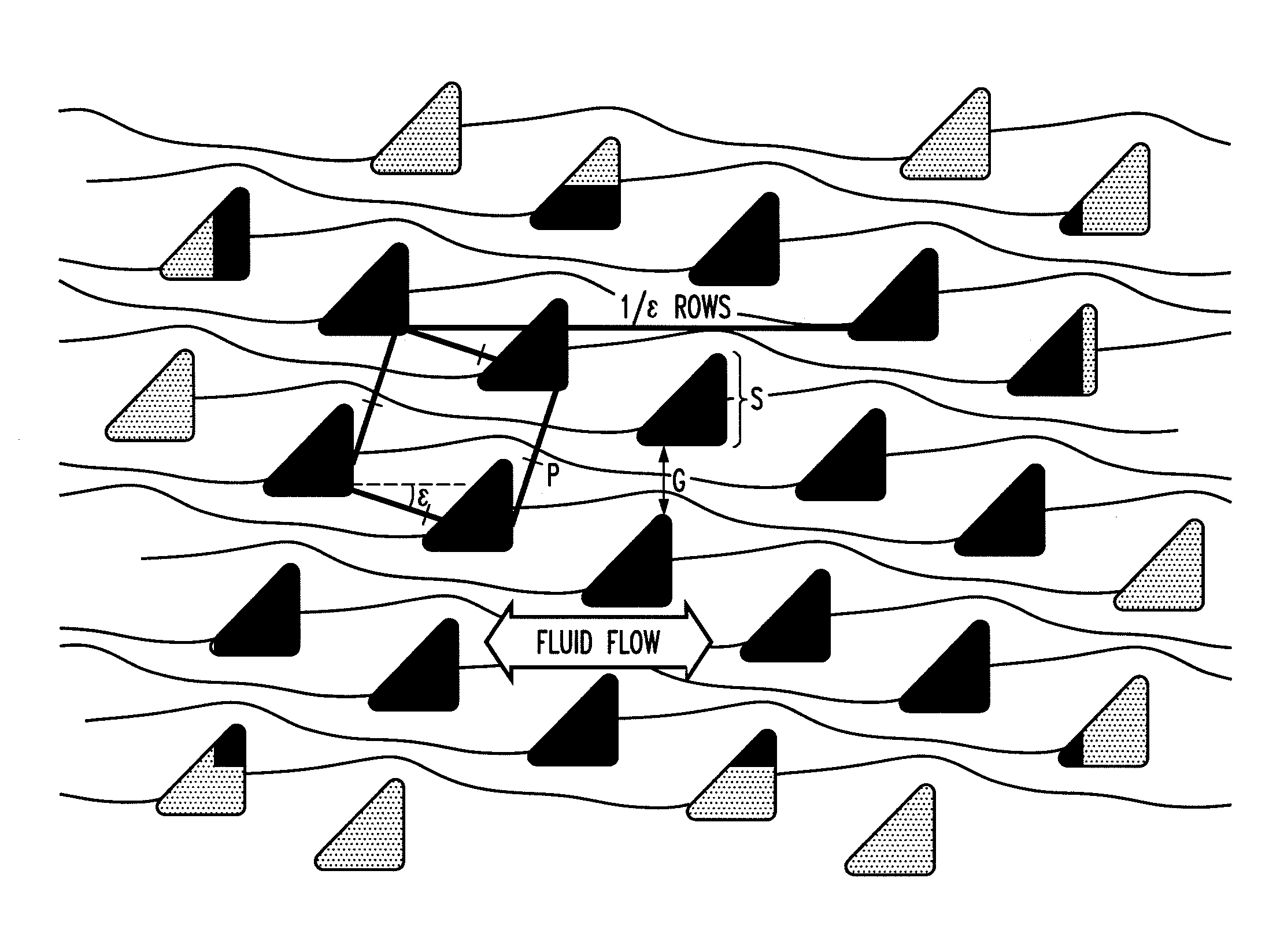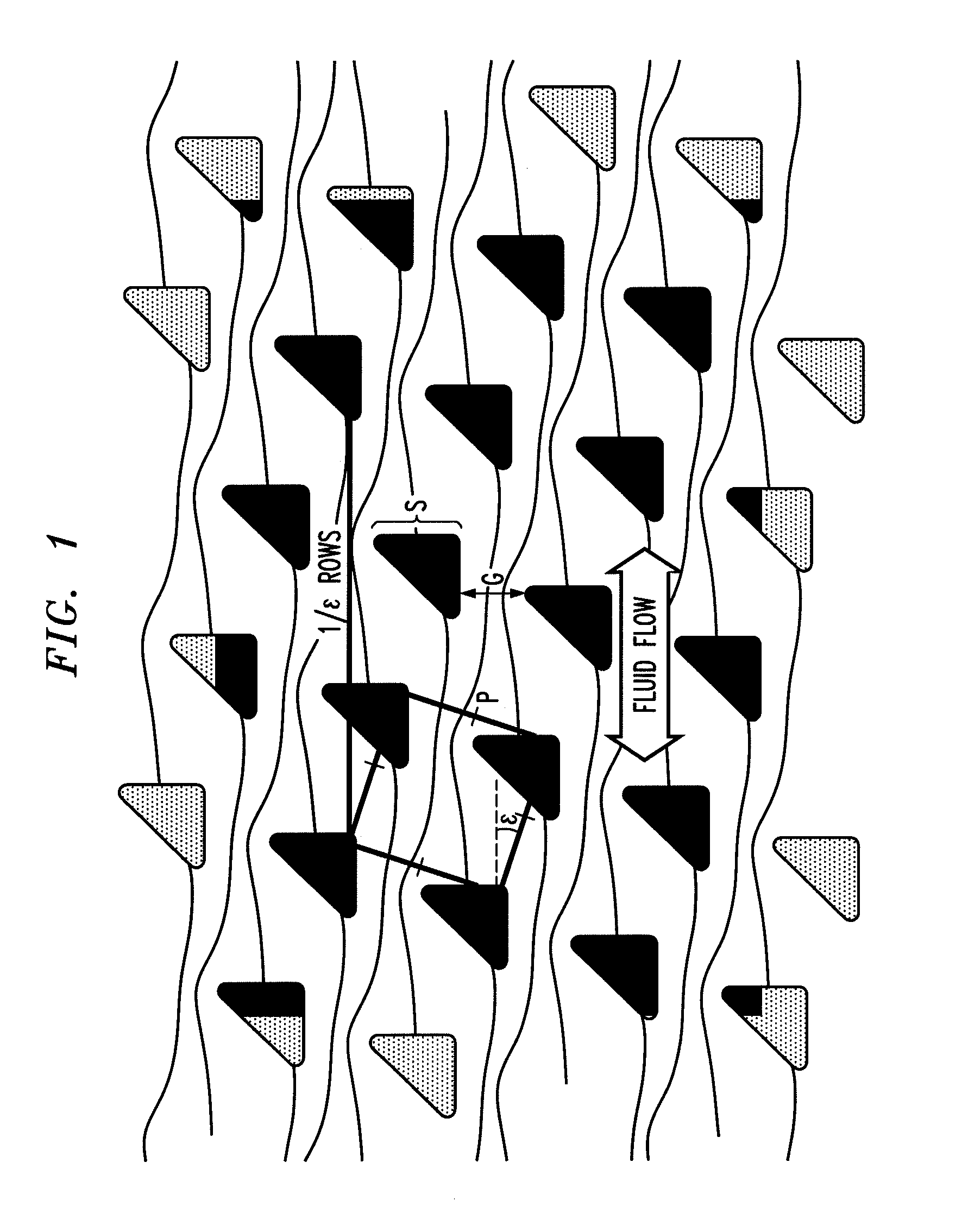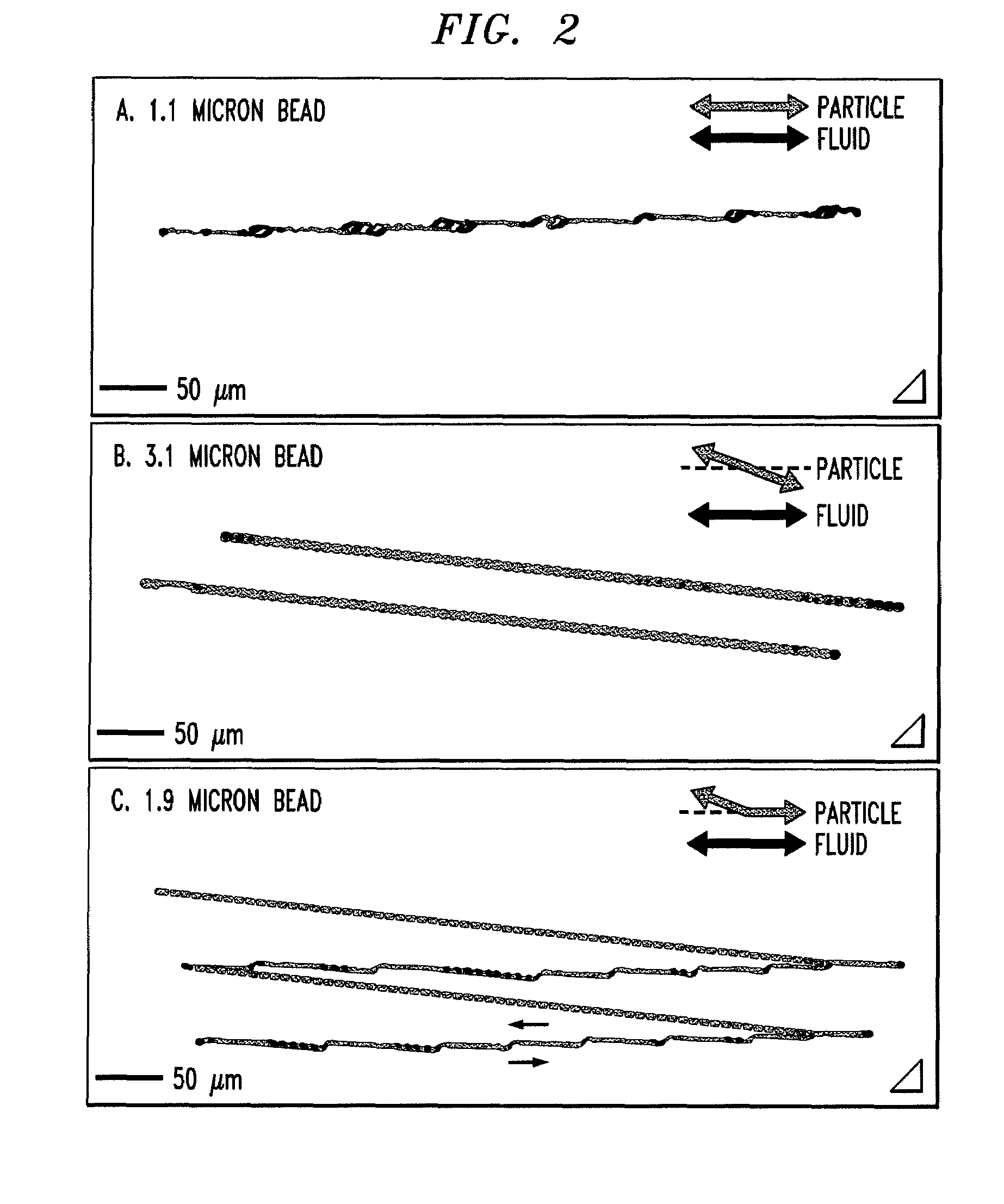Bump array device having asymmetric gaps for segregation of particles
The bump array device with asymmetrically oriented obstacles in microfluidic channels addresses the limitations of conventional sieving matrices by creating non-symmetrical fluid flow profiles, enhancing particle separation efficiency and reducing clogging risks, thereby improving throughput and cost-effectiveness.
- Summary
- Abstract
- Description
- Claims
- Application Information
AI Technical Summary
Benefits of technology
Problems solved by technology
Method used
Image
Examples
example 1
A Deterministic Microfluidic Ratchet
[0103]This example describes a microfluidic device in which the trajectory of particles within a certain size range varies with the direction the particles move through the device. This ratcheting effect is produced by employing triangular rather than the conventional circular posts in a deterministic lateral displacement device where an array of posts selectively displaces particles as they move through the array. This effect is then used to demonstrate a fractionation technique where particles can be separated from a fluid plug without any net motion of the original fluid plug. The underlying mechanism of this method is based on an asymmetric fluid velocity distribution through the gap between posts.
[0104]Microfluidic devices, such as those used in “lab on a chip” applications, typically operate at low Reynolds number (“low” Reynolds number refers to Reynolds number not greater than 1, and preferably smaller, such as 0.1, 10−3, or smaller). In t...
example 2
Bump Array Employing Triangular Posts
[0113]This example describes microfluidic arrays which sort particles based on size according to the deterministic lateral displacement method, by using triangular posts instead of the usual round posts. When triangular posts are used rather than round posts, and the triangular posts are properly oriented (i.e., such that the surfaces defining the gap are asymmetric), the critical size is decreased for a given gap size between the posts. This is because the different post geometry on either side of the gap causes an asymmetric flow profile through the gap, with flux shifting towards the vertex of the triangle. This shift in fluid flux reduces the width of the stream that determines the critical particle size. In this example, both experiment and modeling are used to show that changing the post shape from circular to triangular results in several practical advantages over similar arrays with circular posts including increased dynamic range and thr...
PUM
 Login to View More
Login to View More Abstract
Description
Claims
Application Information
 Login to View More
Login to View More - R&D
- Intellectual Property
- Life Sciences
- Materials
- Tech Scout
- Unparalleled Data Quality
- Higher Quality Content
- 60% Fewer Hallucinations
Browse by: Latest US Patents, China's latest patents, Technical Efficacy Thesaurus, Application Domain, Technology Topic, Popular Technical Reports.
© 2025 PatSnap. All rights reserved.Legal|Privacy policy|Modern Slavery Act Transparency Statement|Sitemap|About US| Contact US: help@patsnap.com



